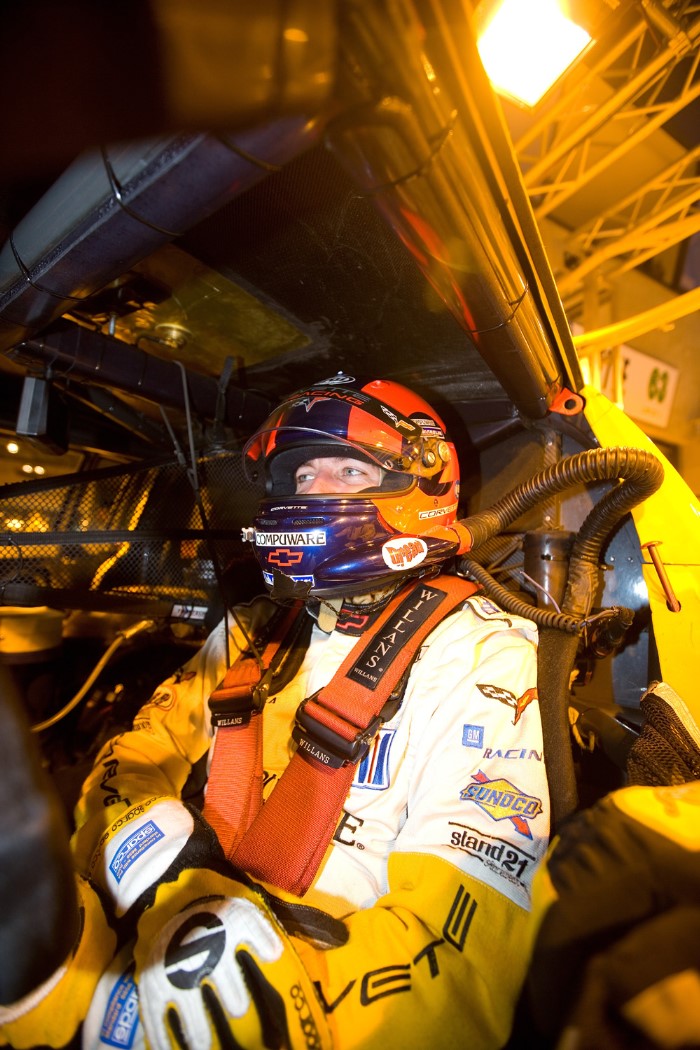Oliver Gavin: Will this be the toughest 24 yet?
 |
| Oliver Gavin |
| Richard Prince Photos |
He may have competed there nine times before, and he may do marathon running as a hobby, but all this will pale into relative insignificance on the 12-13th June when 37-year-old Oliver Gavin takes on the legendary 24 Hour race in the large industrial town of Le Mans in North West France.
The British racing driver, along with team mates Olivier Beretta from Monaco and Frenchman Emmanuel Collard, will be pitting their talent, race craft and stamina against the cream of international sports car racing in the most prestigious event of their racing year. And Oliver, who lives with his wife and three children in Yardley Hastings, Northamptonshire, considers this will be the toughest Le Mans yet.
Racing for the American Corvette Racing team in a Chevrolet Corvette C6.R, he acknowledges it’s never an easy task, but goes on to explain how the level of competition has made the challenge even harder.
“It’s always tough at Le Mans. You’re battling the clock, the track, the conditions, and sometimes even your own car if you’ve not found a set up in qualifying that’s comfortable for all of you. And this year the GT2 class, in which we are entered, will be hyper-competitive. There are most probably 10 cars with a genuine and realistic chance of winning, which will be right there on the pace, all competing and racing super close."
The four-time GT1 class winner continues, “This is the big one that every manufacturer wants to win; the big title they all want to lay claim to – it’s the real jewel in the crown that everyone wants to have. It means a great deal to Corvette and is the focus of our year.
“We are pretty well prepared but a bit disappointed that we haven’t been able to get the last 15kgs of performance balancing ballast off the car that was put on after Sebring. That makes a difference to braking and acceleration and – considering the duration of this race – that 15 will add up. But we will have to deal with that now, and make good.
“As far as the opposition is concerned, the Risi Ferraris have been hugely competitive for the last few years and I think they’ll be joined by the Felbermayr and IMSA Matmut Porsches, and the BMWs at the top of the field. Whichever way you look, you’ve got great competition and I think it will be much like the ALMS races where you’ve got this big train of cars all racing around together. There’s bound to be a few sweaty palms and concerned faces up and down the pit lane, wondering what will happen on track!
“Everyone will want to be right there with the leader, and there will inevitably be contact and issues and you’ve got to hope it doesn’t happen to you. More than ever before, you can’t afford for anything to go wrong; if it does you’ve almost got no chance of winning as there’s so many cars all about the same speed and one of us will have the perfect race. If that’s the case, you’ll not be able to catch up if you are delayed for any reason. Any driver errors or pit lane mistakes will be punished severely …the stakes are high."
The GT2 class is one of four different categories of racing cars all competing against each other within the same race, with the top two prototype categories featuring manufacturers such as Audi and Peugeot and from which the overall winner of the race will come. The speed differential between the faster and slower cars adds another dimension to the challenge ahead.
“I think it’s always a surprise when you get to Le Mans to see again how much faster the fastest prototypes are. This year the difference between the fastest Peugeots and Audis and the slowest GT2 cars will be extreme. You have to keep your eyes in the mirror and eyes on the rear-facing, on-board camera to make sure you don’t get dive-bombed. You can’t and shouldn’t expect them to always predict where you’re going to go and a number of people’s races will be ruined by contact with other cars. We have a very good spotting system with the team but it’s logistically and practically hard to do it at Le Mans because of the size of the track so it puts more emphasis on the driver to look after himself when out there. You have to deal with traffic, darkness, and really fast cars."
The 24-hour race is a huge test of both man and machine, and takes place on a 14 kilometer circuit which is partly made up of public roads. While drivers will have the luxury of a few hours sleep in between their stints behind the wheel, their mechanics and engineers will be working for 36 hours or more non-stop in the lead up to, during and after the race. It really is endurance racing in the raw.
